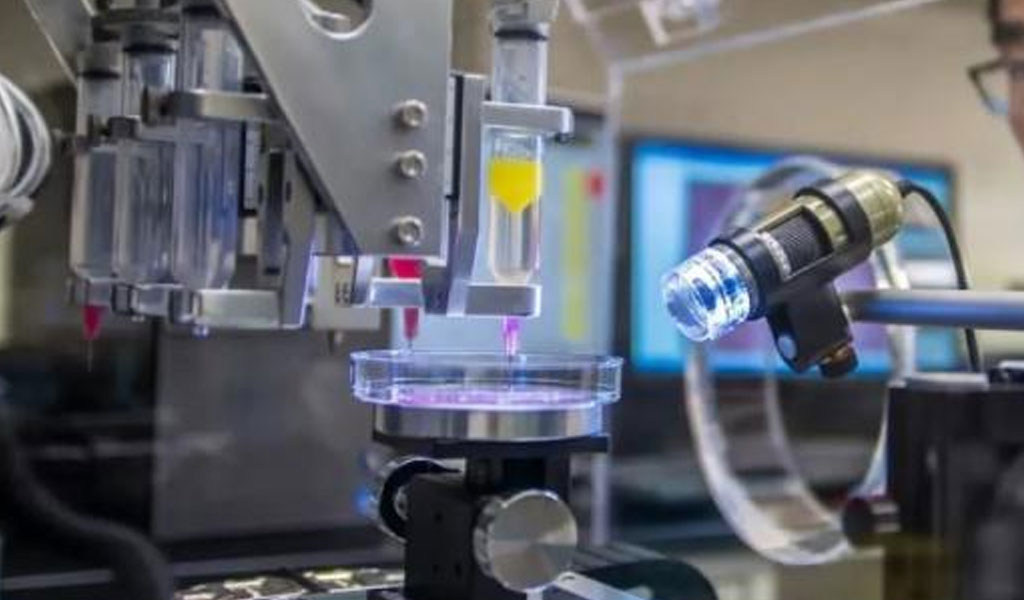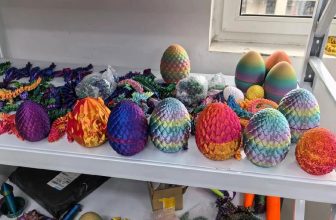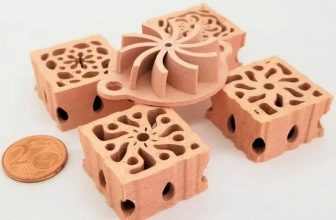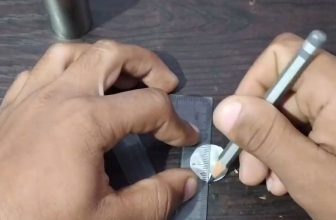
3D printing, also known as additive manufacturing, has revolutionized manufacturing, prototyping, and even hobbyist activities. One of the most critical aspects of 3D printing is the selection of the appropriate material. The choice of material affects the strength, flexibility, durability, and overall quality of the final product. This article delves into the diverse world of 3D printing materials, providing a comprehensive guide on how to choose the right one for your specific needs.
Understanding 3D Printing Technologies
Before diving into materials, it’s essential to understand the various 3D printing technologies, as they significantly influence material compatibility and performance.
Fused Deposition Modeling (FDM)
FDM is one of the most common 3D printing technologies. It works by extruding thermoplastic filaments through a heated nozzle, layer by layer. FDM printers are widely used due to their affordability and the variety of materials they can use, including PLA, ABS, PETG, and more.
Stereolithography (SLA)
SLA printing uses a laser to cure liquid resin into hardened plastic in a layer-by-layer fashion. This technology is known for its high precision and ability to create intricate details. Common materials include standard resins, tough resins, and flexible resins.
Selective Laser Sintering (SLS)
SLS uses a laser to sinter powdered material, binding it together to create a solid structure. This technology is ideal for producing complex geometries and durable parts. Materials used include nylon, alumide, and other powdered composites.
Digital Light Processing (DLP)
Similar to SLA, DLP uses a digital projector screen to flash an image of a layer across the entire surface of the vat of resin. This method can be faster than SLA and is also known for high resolution and detail. DLP materials are typically photopolymers.
Multi Jet Fusion (MJF)
MJF uses a sweeping arm to deposit material in thin layers, with fusing agents being selectively deposited to bind the material. A detailing agent is also applied to improve resolution. This mjf printing technology is suited for functional prototypes and end-use parts, primarily using nylon-based materials.
Common 3D Printing Materials
Understanding the properties and applications of common 3D printing materials is crucial for making an informed choice.
Polylactic Acid (PLA)
Properties: PLA is a biodegradable thermoplastic derived from renewable resources like corn starch or sugarcane. It is easy to print with, offering a low melting temperature, and emits a sweet odor during printing.
Applications: Ideal for prototyping, educational purposes, and low-wear applications. It is commonly used for decorative objects, toys, and household items.
Advantages:
- Easy to print with.
- Environmentally friendly.
- Good surface finish and detail.
Disadvantages:
- Brittle and prone to breaking under stress.
- Low heat resistance, making it unsuitable for high-temperature applications.
Acrylonitrile Butadiene Styrene (ABS)
Properties: ABS is a strong, durable thermoplastic with high impact resistance and moderate flexibility. It is known for its toughness and ability to withstand higher temperatures compared to PLA.
Applications: Used in automotive parts, electronic housings, and LEGO bricks. Suitable for functional prototypes and end-use parts requiring durability.
Advantages:
- High impact resistance.
- Good mechanical properties.
- Better heat resistance than PLA.
Disadvantages:
- Requires a heated bed and enclosed print chamber to prevent warping.
- Emits potentially harmful fumes during printing.
Polyethylene Terephthalate Glycol (PETG)
Properties: PETG is a glycol-modified version of PET, offering durability, flexibility, and chemical resistance. It combines the ease of printing of PLA with some of the robustness of ABS.
Applications: Suitable for functional parts, mechanical components, and food-safe containers.
Advantages:
- Strong and durable.
- Chemical and moisture resistant.
- Easy to print with minimal warping.
Disadvantages:
- Prone to stringing and oozing.
- Requires precise print settings for optimal results.
Thermoplastic Polyurethane (TPU)
Properties: TPU is a flexible, rubber-like material known for its elasticity and abrasion resistance. It is used when flexibility and toughness are required.
Applications: Ideal for gaskets, seals, flexible enclosures, and wearable items like watch straps.
Advantages:
- Highly flexible and elastic.
- Good wear and tear resistance.
- Impact resistant.
Disadvantages:
- More challenging to print due to flexibility.
- Slower print speeds required to avoid deformation.
Nylon (Polyamide)
Properties: Nylon is a durable, strong, and flexible material with excellent abrasion resistance and chemical stability. It can withstand significant mechanical stress and has good thermal properties.
Applications: Used in mechanical parts, gears, and functional prototypes requiring durability and wear resistance.
Advantages:
- High strength and durability.
- Good impact and abrasion resistance.
- Flexible and resilient.
Disadvantages:
- Hygroscopic (absorbs moisture from the air), which can affect print quality.
- Requires high print temperatures and a heated bed.
Resin
Properties: Resin materials used in SLA and DLP printing are photopolymers that harden when exposed to specific wavelengths of light. They offer high detail and smooth surface finishes.
Applications: Ideal for jewelry, dental models, prototypes requiring high detail, and artistic sculptures.
Advantages:
- High precision and detail.
- Smooth surface finish.
- Variety of specialized resins (e.g., tough, flexible, castable).
Disadvantages:
- Brittle compared to thermoplastics.
- Requires post-processing (washing and curing).
- Handling of liquid resin can be messy and requires safety precautions.
Advanced and Composite Materials
Carbon Fiber Reinforced
Properties: Carbon fiber reinforced materials combine thermoplastics like nylon with carbon fibers, significantly enhancing strength and stiffness without adding much weight.
Applications: Used in aerospace, automotive, and high-performance sporting goods.
Advantages:
- Extremely strong and lightweight.
- High stiffness and dimensional stability.
- Good thermal properties.
Disadvantages:
- Abrasive to nozzles and requires hardened steel nozzles.
- More expensive than standard thermoplastics.
Metal Filaments
Properties: Metal filaments are composites of metal powders and thermoplastic binders, enabling the printing of metal-like objects with FDM printers. After printing, parts often require sintering to remove the binder and fuse the metal particles.
Applications: Suitable for decorative objects, low-load mechanical parts, and prototyping metal components.
Advantages:
- Metal-like appearance and properties.
- Can produce heavy, dense parts.
Disadvantages:
- Requires specialized post-processing.
- Higher cost and print difficulty.
Wood Filaments
Properties: Wood filaments are composites of PLA or other thermoplastics with wood fibers. They produce objects with a wood-like appearance and texture.
Applications: Ideal for decorative items, sculptures, and furniture prototypes.
Advantages:
- Wood-like finish and feel.
- Can be sanded and stained.
Disadvantages:
- Brittle and prone to breakage.
- Requires specific print settings to avoid clogging.
Polycarbonate (PC)
Properties: Polycarbonate is a high-performance thermoplastic known for its strength, impact resistance, and transparency. It can withstand high temperatures and is flame-retardant.
Applications: Used in industrial applications, automotive components, and protective gear.
Advantages:
- Extremely strong and impact resistant.
- High heat resistance.
- Transparent and flame-retardant.
Disadvantages:
- Difficult to print, requiring high temperatures and an enclosed build chamber.
- Prone to warping and requires good adhesion to the print bed.
Factors to Consider When Choosing a 3D Printing Material
Selecting the right material involves considering several factors, including mechanical properties, environmental resistance, ease of printing, and specific application requirements.
Mechanical Properties
- Strength: Consider the tensile and compressive strength required for your application. Materials like ABS, nylon, and carbon fiber reinforced filaments offer high strength.
- Flexibility: For applications requiring flexibility, materials like TPU and certain resins are ideal.
- Durability: For parts that will undergo wear and tear, materials like nylon and PETG are suitable.
Environmental Resistance
- Heat Resistance: If the part will be exposed to high temperatures, materials like ABS, polycarbonate, and certain resins are preferable.
- Chemical Resistance: For parts exposed to chemicals, PETG, nylon, and certain specialized resins are recommended.
- UV Resistance: Outdoor applications require UV-resistant materials like ASA or UV-stable resins.
Ease of Printing
- Print Temperature: Consider the required print temperature and whether your printer can achieve it. PLA is easy to print at low temperatures, while materials like polycarbonate need higher temperatures.
- Bed Adhesion: Some materials require a heated bed or specific adhesion methods to prevent warping. ABS and nylon often need an enclosed chamber.
- Print Speed and Precision: Flexible materials like TPU require slower print speeds, while resins used in SLA/DLP printing offer high precision but need post-processing.
Application-Specific Requirements
- Aesthetic Quality: For high-detail or visually appealing parts, resins or PLA with a good surface finish are ideal.
- Functional Requirements: For functional prototypes or end-use parts, consider materials like ABS, nylon, or carbon fiber composites.
- Biocompatibility: For medical or food-related applications, materials must be biocompatible and safe, such as certain resins or PETG.
Conclusion
Choosing the right 3D printing material involves balancing various factors, including mechanical properties, environmental resistance, ease of printing, and application-specific needs. Understanding the characteristics and applications of common 3D printing materials, as well as more advanced composites, will help you make informed decisions and achieve the best results for your projects. Whether you’re a hobbyist, a professional engineer, or a designer, selecting the appropriate material is key to unlocking the full potential of 3D printing technology.





